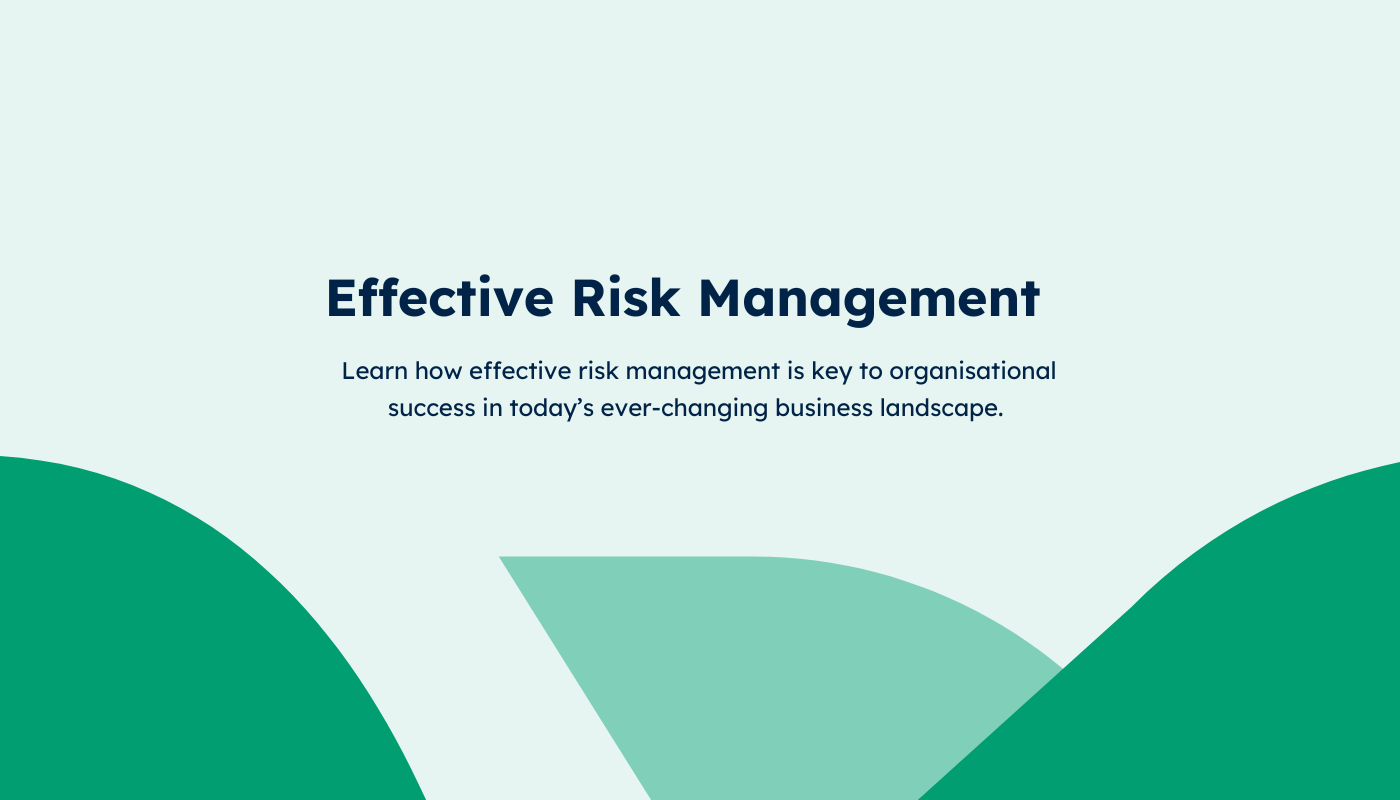
Effective Risk Management Process
Transform risk into opportunity. Discover how an effective risk management process drives growth, enhances efficiency, and builds resilience for you.
A well-executed risk management process does more than protect an organization—it drives growth. Far from being a defensive strategy, risk management is a structured approach to identifying, assessing, and mitigating risks that could disrupt business objectives.
When done right, risk management enhances operational efficiency, promotes resilience, and uncovers new opportunities.
Importance of a Risk Management Policy
A risk management policy lays the foundation for how your organization identifies, prioritizes, and responds to risk. It defines your overall approach and outlines responsibilities at every level, from the board to control owners.
When drafting a policy, consider including:
- A clear scope aligned with strategic objectives
- Defined roles for senior leaders and stakeholders
- Methods for identifying risks, such as assessments or vendor reviews
- A risk rating system based on impact and likelihood (e.g., a risk matrix)
- Tailored mitigation strategies based on risk type and appetite
- Requirements for logging risk data, ownership, and mitigation actions
A documented policy helps create a repeatable, transparent process that can evolve with your organization.
Identifying Risks Across the Organization
A comprehensive risk register starts with input from across the organization. Engaging stakeholders from various departments helps uncover risks from multiple perspectives—financial, operational, strategic, compliance, and reputational.
Risk identification doesn’t need to be intimidating. When approached thoughtfully, it becomes a tool for strengthening security, improving stability, and advancing your mission.
Assessing and Classifying Risks
Once risks are identified, the next step is a formal risk assessment. Each risk should be evaluated for likelihood and impact using the framework defined in your policy. This classification allows you to prioritize risks and develop focused mitigation plans.
Risk assessments should be conducted regularly. While annual reviews are standard, your organization may benefit from more frequent evaluations depending on your risk profile and industry changes.
Choosing Risk Mitigation Strategies
Effective risk management requires using the right mix of mitigation strategies based on the nature of each risk. Common approaches include:
- Avoidance: Opting not to engage in high-risk activities when potential consequences outweigh benefits
- Reduction: Implementing processes or tools to reduce the likelihood or severity of a risk
- Transfer: Shifting risk to a third party, such as through contracts or insurance
- Acceptance: Choosing to accept a risk when it falls within your defined risk appetite
Continuous Monitoring and the Risk Register
Risk management doesn’t end after the initial assessment. Ongoing monitoring is essential for adapting to changing circumstances. A strong monitoring plan helps organizations stay ahead of emerging risks and continuously improve their approach.
Your risk register should serve as a living document. Keep it updated with new risks, evolving threat levels, mitigation outcomes, and ownership changes. Clear reporting practices ensure that key stakeholders remain informed and can take timely action.
Turning Risk Into Opportunity
Managing risk is an ongoing process, not a one-time effort. Organizations that approach risk strategically—building awareness, embedding strong practices, and adapting to change—are better positioned to thrive in a fast-moving world.
Risk management is no longer just about defense. It's a path to building resilience, fostering innovation, and achieving long-term success.
To learn more about effective risk management, contact us.
References
2017 Trust Services Criteria for Security, Availability, Processing Integrity, Confidentiality, and Privacy (with Revised Points of Focus – 2022)
Disclaimer: AssuranceLab performs the role of an independent auditor across hundreds of client environments. We do not perform technical roles or assessments and this content is not intended to be comprehensive on those technical or detailed aspects of cybersecurity. You should perform further research and seek professional advice as appropriate before acting on any of the information contained here.







